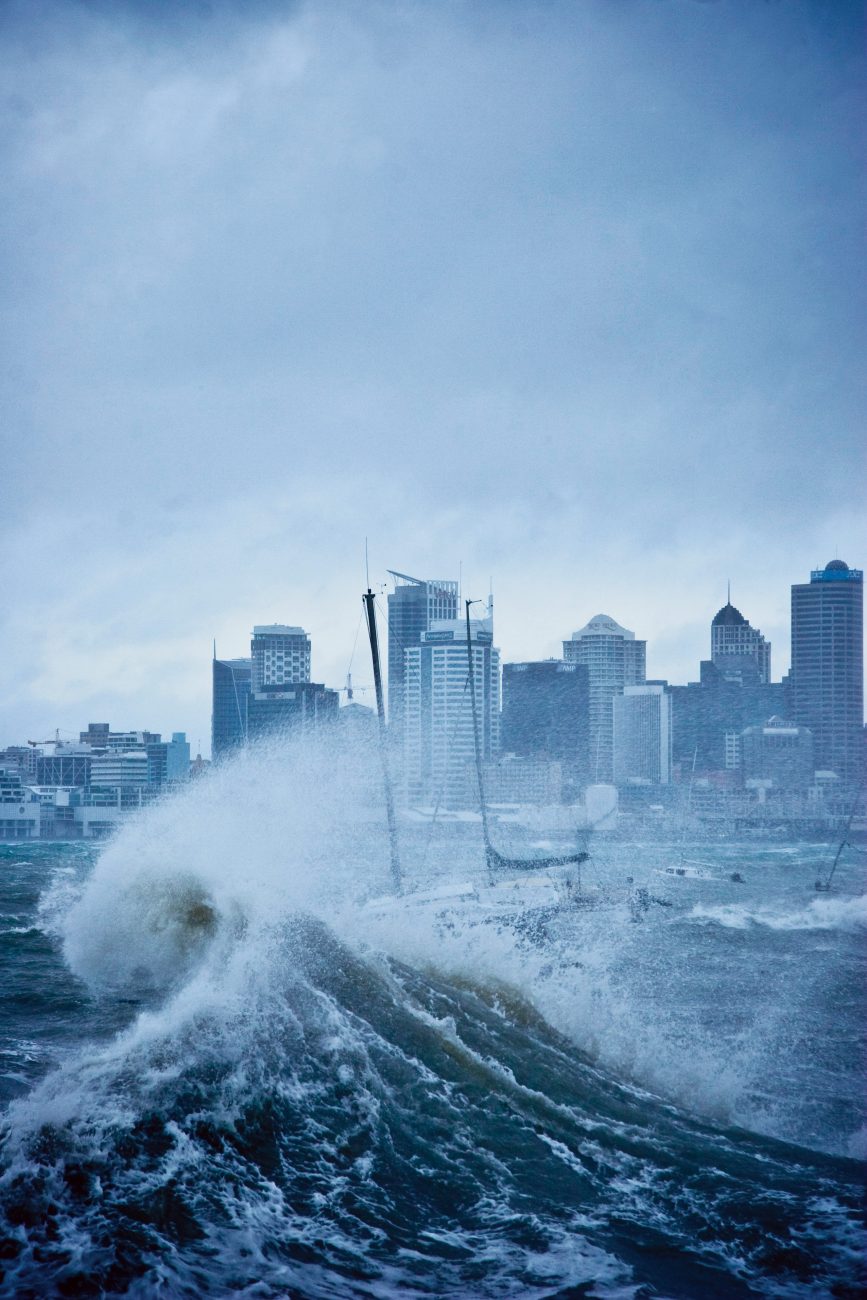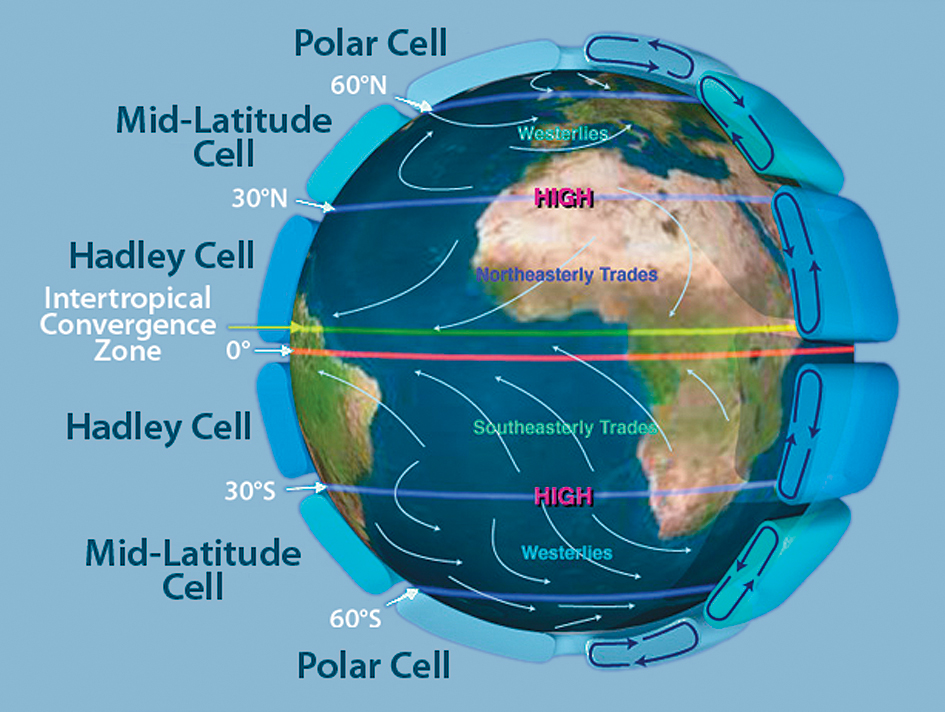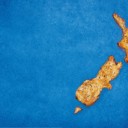
The Heat is On
What will a warmer New Zealand be like?
I’ve been chopping down some old man pine for firewood. The trees are getting on for a hundred years old, probably planted around the same time as our farmhouse was built. They’ve done a great job providing shelter, but their shade is not welcome on a corner of our young vineyard and their roots are out-competing the vines. As the gnarly old trunks are chainsawed into rounds for splitting, the slabs of wood reveal the progression of the trees’ lives. Wide rings mark years of rapid growth, narrow ones mark years when the tree struggled. They show warm years, cold years, wet years and dry years. They sum up the weather, integrate it, and present the information to be read by those with the key.
Human memory is much more fallible. If I asked the families who’ve lived here about the weather they experienced over the last century, they’d remember nor’west gales that uprooted trees, the great snowfall of 1945, big floods and testing droughts, heavy rain that brought landslips and gullying that ate into paddocks. They’d remember warm summers and cold winters, and perhaps be able to show me rainfall records. But if I were to ask them how the climate had changed, they would be unreliable witnesses. We remember the big things, but we’re not designed to record subtle changes in long-term averages.
Climate change is about variations in small numbers, and the power of small numbers is something we underestimate at our peril.
Carbon dioxide, the greenhouse gas that’s getting us into trouble, only amounts to about 385 parts per million of the gases in the atmosphere—not a large amount. But that’s a third more CO2 than 150 years ago, enough to have caused, and continue to cause, significant changes in local and global climate. Twelve of the 13 years from 1995 to 2007 have been the warmest since 1850, while 1998 and 2005 are the warmest years since records began. Over the last 100 years, New Zealand’s temperature has increased by 0.9ºC.
[chapter break]
Earlier this year, NIWA released the latest projections for New Zealand’s climate over the next century. To produce these, NIWA’s researchers used the results of the Intergovernmental Panel on Climate Change’s (IPCC) Fourth Report, published last year, which provides a broad-brush picture of the changes likely to take place around the globe. To get down to the level of Paraparaumu or Kaiteriteri, the projections have to be “downscaled”. NIWA used both statistical and dynamic downscaling; the former uses local climate data and develops statistical relationships between, say, rainfall in Hokitika and what’s happening at the larger, global-model scale. Dynamic downscaling uses NIWA’s new regional climate model, taking the global model projections for the New Zealand region, and using those to calculate what happens here on a much finer scale.
NIWA used a middle-of-the-road emissions scenario, the IPCC’s A1B projection, a projection that assumes strong economic growth, a global population of 9 billion by 2050 (falling thereafter) and the rapid introduction of clean energy technology.
According to this regional climate model, for at least the first half of the century we will experience invigorated westerlies, increased rainfall in the west, and increased dryness in the east. In short, it’s today’s climate on steroids, and warming all the time.
Our annual average temperature is likely to increase by about 1°C by 2040, and 2°C by 2090. It doesn’t sound like a lot-temperatures can change by tens of degrees in a single day. But that 2°C change is a bit like moving Wellington to Auckland. Dunedin will be more like Marlborough, Auckland a bit more like Sydney. It’s as if Maui had upped anchor and sailed his waka a few hundred kilometres closer to the equator.
[chapter break]
The results suggest that New Zealand, relatively speaking, won’t be too badly off. We’re surrounded by big cool oceans, which take a long time to warm up, and our 2ºC warming is well below the global average increase—expected to be about 3ºC. Other places, like the Arctic and the centres of the large Northern hemisphere continents, will warm up by much more. But small numbers can have a big impact: severe droughts could become twice as frequent, rainfall might be heavier, in turn causing more flooding and erosion. There will be less frost and more days that are unusually hot.
For instance, Auckland has about 21 days a year over 25ºC, but by 2090, its residents will experience 60 days of temperatures over 25ºC. If we fail to curb emissions, there could be as many as 80 days a year that exceed 25ºC. And, as mentioned and as you might expect, it won’t get as cold. The North Island (excluding the mountains) currently has 30 to 40 frost days a year. That figure could drop to somewhere between five and 15 days a year.
There will be other effects. Warmer air can hold more water vapour, and water vapour (apart from being an important greenhouse gas) is also often described as the “fuel” for weather systems. As the century passes, the warming atmosphere will hold more water and the flow of water around the atmosphere, land and ocean will speed up. Rainfall in New Zealand will be heavier, shorter and sharper.

Warming also brings shorter snow seasons in the mountains, but could bring more snow fall, at least as long as the snowline remains below the mountain-tops—NIWA is planning work with a specialised snow model to tease out the balance between rising snowlines and increasing snowfalls. Any changes will impact on our rivers and hydro storage, as most of the winter precipitation in the mountains around the hydro schemes in the South Island falls as snow. This means that lakes that have low levels at the beginning of winter (as they did this year) will only start to fill again when spring melts the snow pack. Warmer winters will bring more rain, and help to alleviate the dry-winter problem—and more rain in the west will also probably provide more spillover rain events to top up the lakes at all times of year.
A warming climate will also have a considerable impact on ice levels in the Southern Alps. Over the last 30 years, the volume of ice in the Alps has reduced by 11 per cent. While the fast-moving Franz Josef and Fox glaciers on the West Coast should do well in the early part of the century, as strengthening westerlies bring more snow to their névés on the Main Divide, in the long run there will be more rain rather than snow higher up, causing the glaciers to retreat.
The east coast of both islands will probably suffer more droughts, with severe droughts which occur once every 20 years in the current climate—occurring twice as often by the century’s end. A one-in-20-year drought is a serious event for farmers, and for the national economy.
A drought every 10 years will barely give farmers a chance to recover before the next strikes, especially if the periods in between are characterised by low rainfall.
More rain up on the Main Divide will benefit river flows in Canterbury, but it will be drier on the plains. Longer irrigation seasons will be needed to compensate and the temptation to turn to the rivers for more water will be hard to resist.
Rainfall is expected to decline in the north and east of the North Island and down the east coast of the South Island over the first half of the century, but strengthening westerlies will bring more rain to the south and west of the South Island. All of the model runs used by NIWA suggest that the westerlies will be more vigorous in winter and spring, but later in the century there are signs that the subtropical high-pressure zones will move far enough south to bring summer rain in the east. Both the north and east of the North Island, and perhaps the top of the South, will experience more northeasterlies. Gisborne and Hawkes Bay will have more rain, while Taranaki and Buller district might have less—a pattern very similar to that seen over last summer.
[sidebar-1]
And when it rains, it will probably pour. Every 1°C of warming will mean that heavy rain events drop at least eight per cent more water; one in 100-year rain events could become twice as common.
Beyond the obvious weather-related changes, there is another aspect of global climate change that could have a dramatic impact on New Zealand. Sea level rise over the last 100 years has been relatively modest—about 16 cm in this part of the Pacific—but as the planet warms it will accelerate, presenting significant challenges to low-lying coastal properties as well as expensive city infrastructure in Auckland, Wellington and Dunedin.
[chapter break]
At face value it seems as though we should be able to adapt as gradual warming takes place over several generations. But the rate of temperature increase has to be considered in its broader context. In the depths of an ice age, the global average temperature is about 5°C lower than it is at present. When an ice age ends, it takes the planet about 5000 years to warm up, usually at 1°C every 1000 years. Now we’re projecting 2°C increase in just 100 years, a rate of warming 20 times faster than any recent global climate change.
The speed of the change will have significant impacts on natural ecosystems. Communities of plants and animals that are adapted to the present climate will respond to warming at different speeds.
Our agricultural industry has the capacity, and technologies, to adapt: if drought becomes a problem, then irrigation (if water is available) will get us through; if reduced winter chilling reduces crop yields, as will happen to kiwifruit in the Bay of Plenty by the middle of the century, a grower can change his crop to something that prefers more warmth, such as citrus, or move to follow the ideal kiwifruit climate. (It is more likely that, in the immediate future, farmers will be more preoccupied with year-to-year climate variability than the underlying slow warming.)
There will be winners and losers. Southland and South Westland will benefit from extra warmth and reliable rain, and in the long run will warm least, putting less stress on agriculture and ecosystems.
While drought and competition for water will increase costs for east coast dairy farmers, their colleagues down south will be sitting pretty.
New Zealand’s wine industry should also do well. Most grapegrowers would welcome a little more heat to help ripening and boost yields, and a reduced risk of frost at key periods, such as flowering, will cut crop losses. If a vineyard warms to the point that grape quality falls, existing vines can be grafted over to new, warmer climate varieties relatively quickly. Growers in the North Island could switch to red grapes such as shiraz, while cool-climate varieties like sauvignon blanc and pinot noir could move south, perhaps into Southland.
[chapter break]
The picture we have of the future of New Zealand’s climate offers some clues on what can be done to prepare and adapt. But these projections are only of one, very local picture, and close-ups never tell the entire story.
There are political uncertainties, uncertainties about whether emissions reductions will be achieved quickly enough, uncertainty about how the climate system will respond as it accumulates energy. Evidence from ice cores in Greenland suggests that dramatic swings in climate are possible in as little as a year or two.
There are risks we can’t yet quantify, but they are real nonetheless and could make any comfortable assumptions about gradual warming in New Zealand completely irrelevant. Arctic warming, for instance, could cause climate and economic dislocation on a global scale. It is not known what effect the melting of the West Antarctic ice shelves will have on inland glaciers. NIWA’s guidance to local authorities on sea level rise is that they should allow for up to 0.8 m over the next 100 years, reflecting recent research which suggests that the great Antarctic ice sheets could melt faster than anticipated only a few years ago.
But if climate change does continue to be gradual, then New Zealand will be reasonably well-placed to adjust. Auckland might be as warm as Sydney, but it won’t be as hot as Brisbane. The key to adapting to a warming world is to be smart enough to look ahead, and resilient enough to be able cope with change as it happens.



















